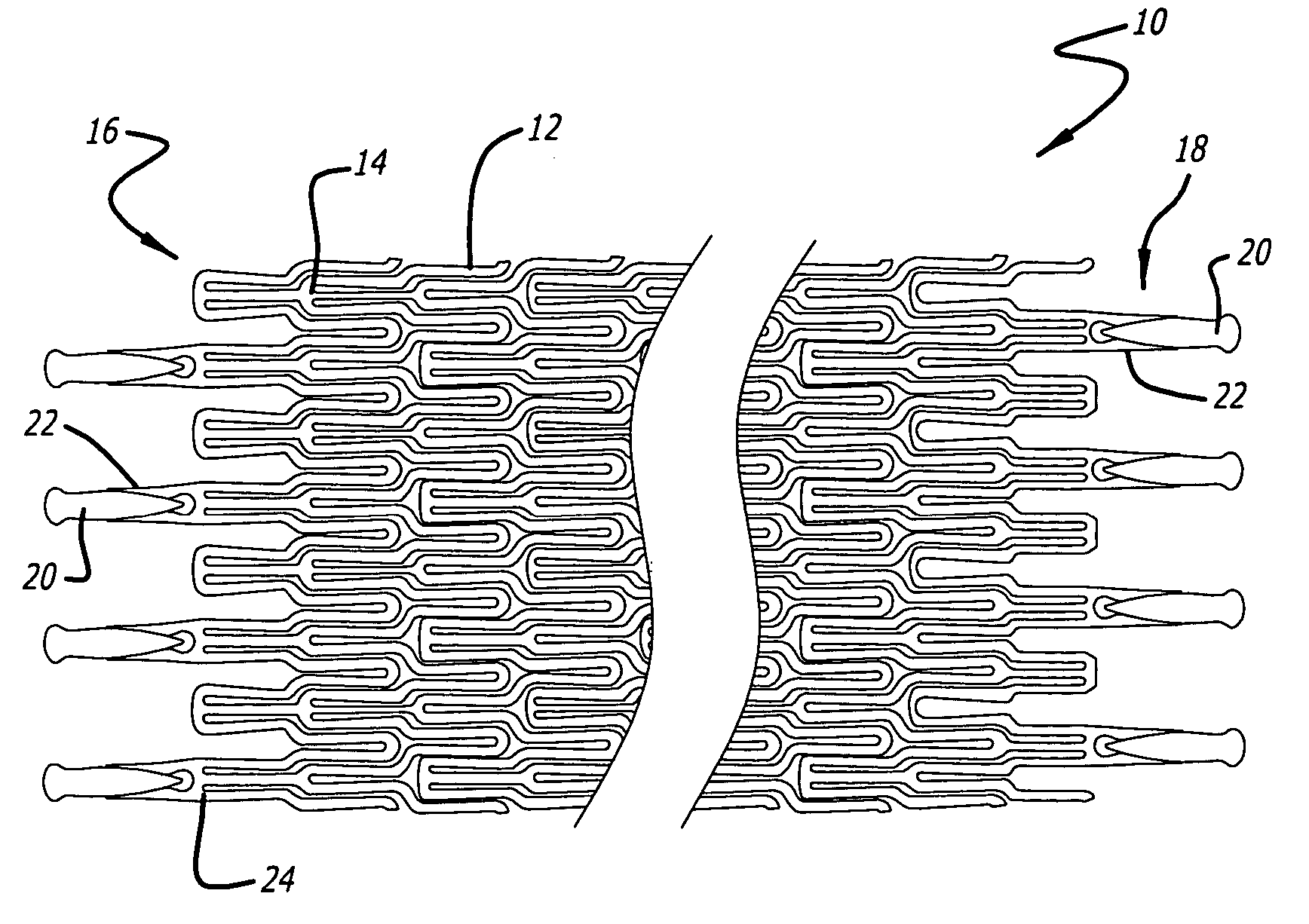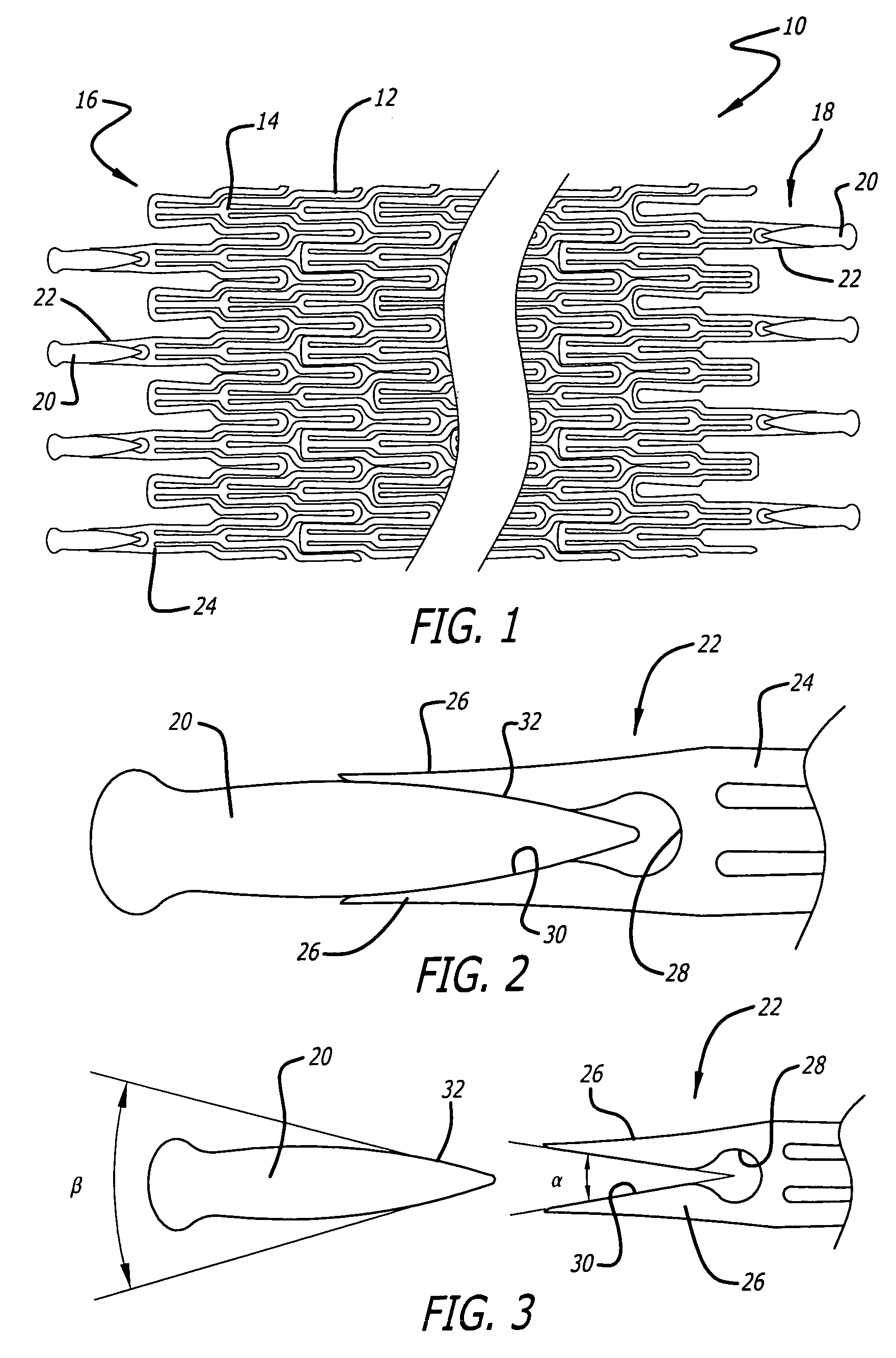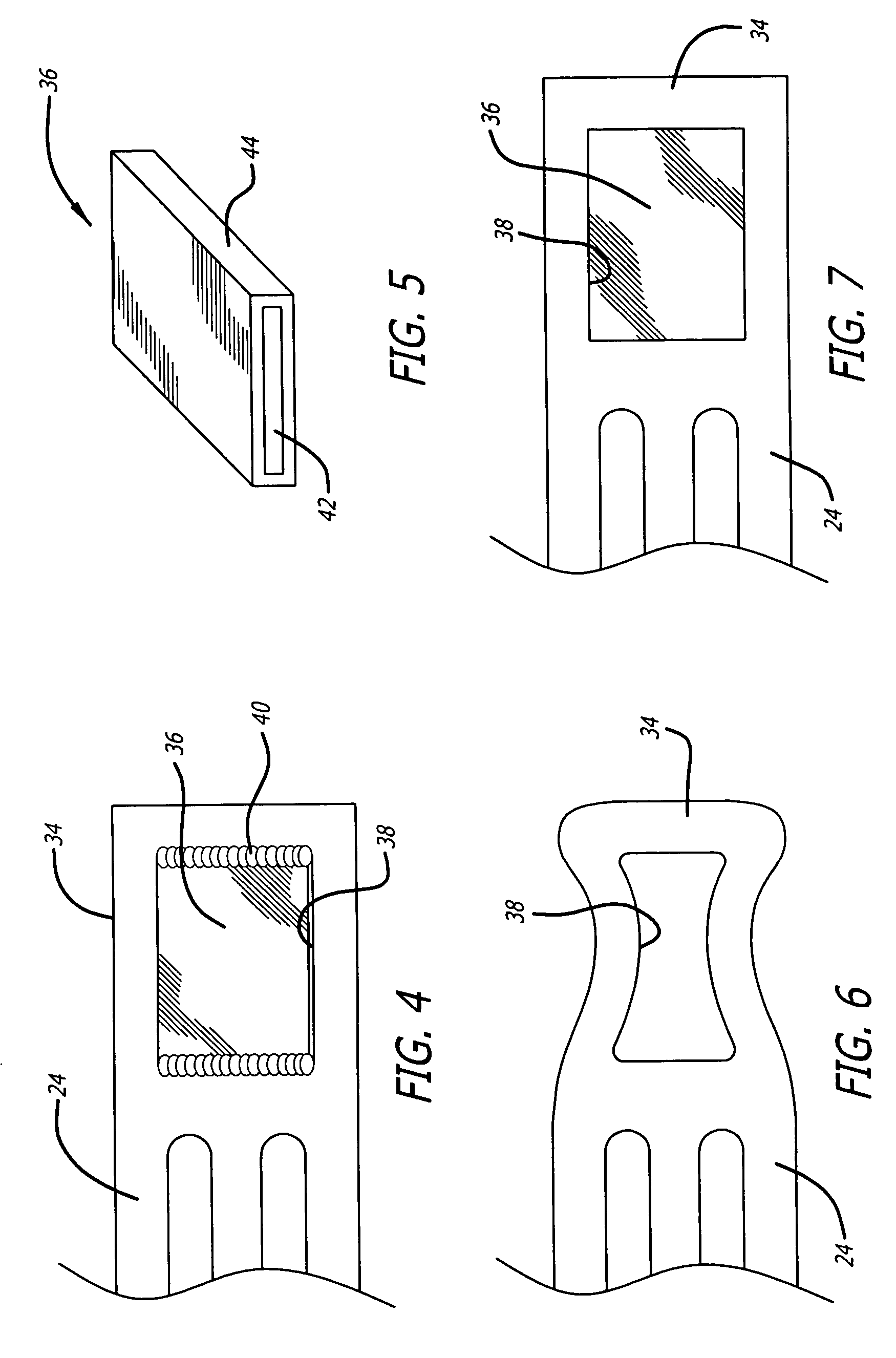Radiopaque markers for medical devices
a technology of radiopaque markers and medical devices, applied in the field of implantable medical devices, can solve the problems of not possessing an appreciable level of radiopacity to allow the stent to be highly visible, the stent may not be the best scaffolding device, and the radiopacity level is lower than the level of balloon expandable stents, so as to achieve sufficient radiopacity, high radiopacity, and radiopacity high
- Summary
- Abstract
- Description
- Claims
- Application Information
AI Technical Summary
Benefits of technology
Problems solved by technology
Method used
Image
Examples
Embodiment Construction
[0021] The present invention relates to radiopaque markers used to enhance the radiopacity of an implantable medical device. For the sake of illustration, the following exemplary embodiments are directed to stents, although it is understood that the present invention is applicable to other medical devices which are implantable in a body lumen as well as other parts of the body.
[0022] The stent embodiment of the present invention can have virtually any configuration that is compatible with the body lumen in which they are implanted. The stent should preferably be configured so that there is a substantial amount of open area. The stent should also be configured so that dissections or flaps in the body lumen wall are covered and tacked up by the stent.
[0023] Referring now to FIG. 1, in one particular embodiment of the present invention, a stent 10 is formed partially or completely from an alloy such as nitinol (NiTi), which has superelastic (SE) characteristics. The strut pattern of ...
PUM
 Login to View More
Login to View More Abstract
Description
Claims
Application Information
 Login to View More
Login to View More - R&D
- Intellectual Property
- Life Sciences
- Materials
- Tech Scout
- Unparalleled Data Quality
- Higher Quality Content
- 60% Fewer Hallucinations
Browse by: Latest US Patents, China's latest patents, Technical Efficacy Thesaurus, Application Domain, Technology Topic, Popular Technical Reports.
© 2025 PatSnap. All rights reserved.Legal|Privacy policy|Modern Slavery Act Transparency Statement|Sitemap|About US| Contact US: help@patsnap.com



